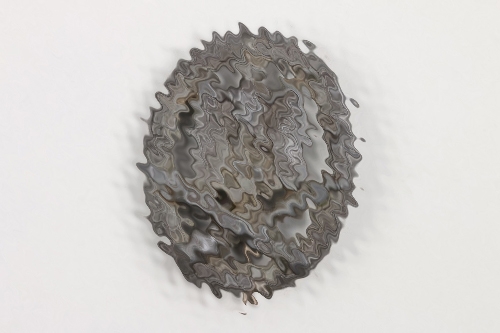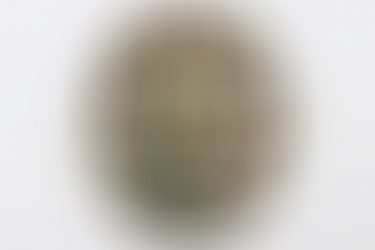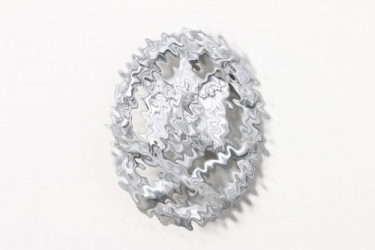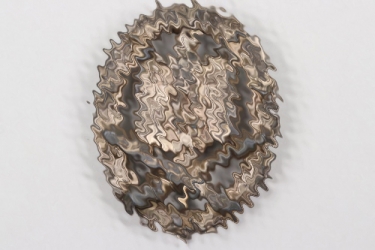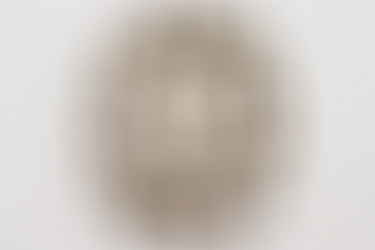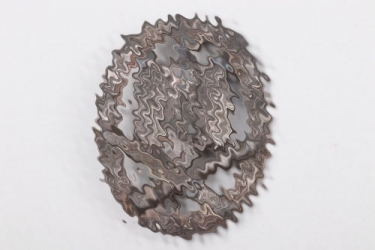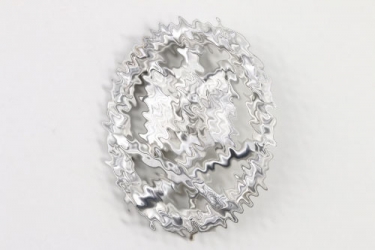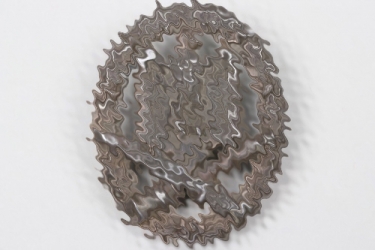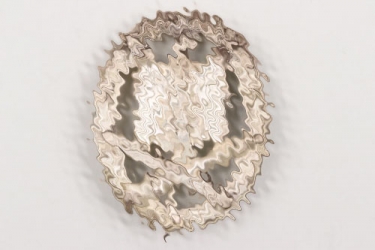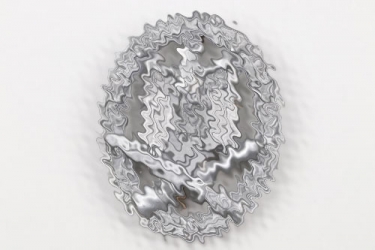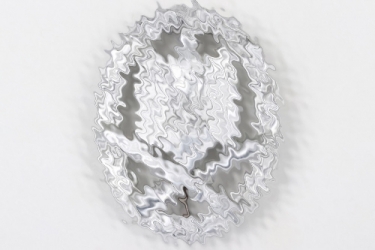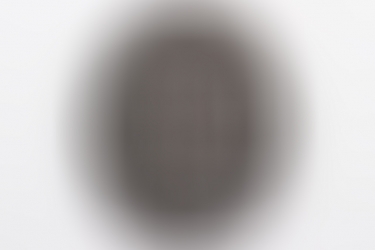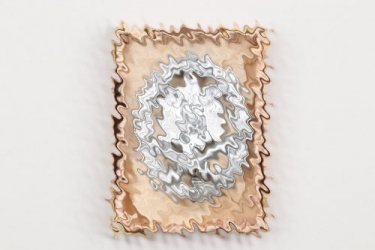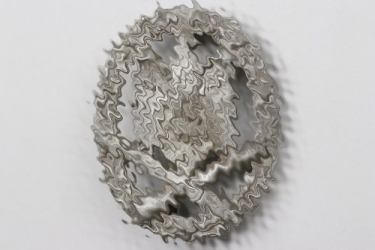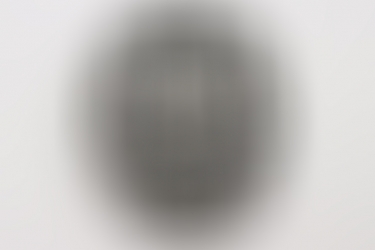11th Contemporary History Auction
Bidding on 625 lots has ended on 1st May 2016. 83% of all lots sold
General Assault Badge - R.S.
MILITARIA PRICE GUIDE
How can I see results?
We continue to publish our last three auction catalogues containing results, descriptions and pictures free of charge for all customers once logged in!
Earlier catalogues are now accessible for subscribers of the new ratisbon's MILITARIA PRICE GUIDE only. This new feature not only provides full access to all past catalogues but supplies sold items in a categorized price guide. Visit www.ratisbons.com/militaria-price-guide for more details.
Own a similar product you want to sell? We are here for you at +49 8541 9053699
-
PAYMENT
-
HOW CAN I PAY FOR MY ORDER?
AUCTIONSYou will receive an e-mail confirming your successful bids the day after the auction has ended. In your personal my ratisbon's you will be able to inform us about your most convenient payment method for this order or tell us about an alternative shipping address.
If we don’t hear from you within 24 hours, we will send an invoice choosing the payment and shipping options which we think are the most comfortable ones to you. If you decide to change your shipping or payment method after receiving your invoice, just drop us a line or visit my ratisbon's/ORDERS for any more details.
SHOP ORDERSChoose your payment method when ordering and submit your order. Once your order has been received we will send an invoice including your shipping costs and your payment instructions.
After receiving the invoice, the order must be paid within 7 days.
Please contact us to discuss layaway options.To learn more about paying at ratisbon's, please see your FAQ pages.
WE ACCEPT FOLLOWING PAYMENT METHODS
-
-
Versand
-
HOW DO YOU SHIP MY NEW TREASURES?
PACKING & TRACKINGWe usually send out orders within 1-3 working days after your payment has been received. In most cases, we are faster than this! We will inform you when your goods are being dispatched and provide a tracking number, In addition, you can always check your order status at my ratisbon's/ORDERS. Delivery times will vary depending upon the delivery destination and type of shipping service you have chosen.
SHIPPING TO ALTERNATIVE ADDRESSIf you prefer to have your order shipped to your work address or a friend during your absence, we will happy to arrange this for you. Send us an email letting us know about your new shipping address and we will be happy to send an updated invoice to you.
OUR LOGISTIC PARTNERS ARE AS FOLLOWS
-
-
OUR GUARANTEE
-
 OUR GUARANTEE!
OUR GUARANTEE!We only offer collectables which to the best of our specialists knowledge are authentic. About 15% of all consignments are returned to the consignor after extensive research due to authenticity issues.
Unlike traditional auction houses we do offer a full right of return. If you are not satisfied with what you won or bought, you may return it within 14 days. Please inform us and we will instruct you on how to return the goods. For more information, please visit FAQ pages.
Important note: Cancelling bids after an auction may disappoint the consignor, who like you is a collector. This situation is easy to avoid. We encourage you not to bid on any collectable if you are unsure if it fits into your collection. Ask us to cancel your bid 24 hours prior to the end of an auction to avoid this situation.
-
COUNTRY Deutschland
DIMENSIONS
WEIGHT
EAN 2000000071500
PERIOD
COUNTRY Deutschland
MATERIAL
DIMENSIONS
MAKER Rudolf Souval
WEIGHT
COUNTRY Deutschland
LOT 15-189
DIMENSIONS
EAN 2000000071500
MAKER Rudolf Souval
WEIGHT
Description
Condition
See description
NAME
General Assault Badge (Allgemeines Sturmabzeichen)
DATE OF INSTITUTION
The General Assault Badge was instituted on June 1st, 1940 by the supreme commander of the Army, Generaloberst von Brauchitsch. The Higher grades II to IV were instituted on June 22th, 1943.
AWARD CRITERIA
The General Assault Badge was awarded to Officers, NCO’s and Soldiers who participated in 3 Infantry or Armoured Assaults on three different days but were not eligible for the Infantry or Panzer Assault Badge. The award was created to recognize the combat actions of all soldiers not serving in Infantry or Panzer regiments but nevertheless engaging in close combat. Among them Combat Engineers, Assault Artillery, Panzer Hunters, Anti- Tank and Anti-Aircraft units. Also eligible was Medical Personnel, Cavalry Units, and Signal Personnel when serving under close combat conditions.
GRADES
Grade I awarded after 3 combat days
Grade II Awarded after 25 combat days
Grade III Awarded after 50 combat days
Grade IV Awarded after 75 and again after 100 combat days.
*For the higher grades, it should be noted that for battle-hardened veterans retroactive service was taken into account. Also, war-wounded were credited with extra combat days.
MANUFACTURING SPECIFICATION
Apart from one exception all early Grade I General Assault Badges were made in hollow form. Materials used were Nickle Silver and Tombak (Buntmetall) Both yellow and on rare occasions also white Tombak was used.
In an effort to save precious materials, by the middle of 1941, the production switch was made to Hollow Zinc and, on rare occasions hollow and solid Cupal, and on one occasion Steel. By the end of 1941, the order was given only to produce Combat Awards in solid form. This also affected the General Assault Badge that from then on was only produced in Zinc both in solid and semi-hollow form. As the war progressed the quality of the zinc used would steadily deteriorate. All higher grades were only ever made from Zinc both in Solid and Semi-Hollow form.
The same goes for the finishes used. Where early badges show a high-quality plated finish, later awards will receive electroplated or galvanized finishes and the last will only receive a cheap wash finish.
For civil use, first a 16mm variant and later 9mm miniatures were produced.
PRESENTATION
The General Assault Badge had to be worn on the left breast side of the uniform. In a central position if worn as a single decoration, below and to the right if in combination with higher valour awards such as the EK I.
The recipient would receive an A4 or A3-sized award document.
No presentation case did ever exist. The awards either came in a paper or cellophane envelope or in a generic cardboard box.
MANUFACTURERS & NUMBER OF GENERAL ASSAULT BADGES AWARDED
So far 37 Grade I makers were identified. Three makers were responsible for the production of the Higher Grade GABs.
The number of General Assault Badges actually awarded will forever remain unknown but several hundred thousand for sure were produced.

